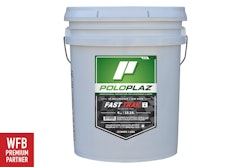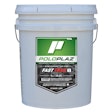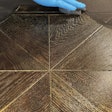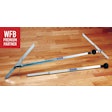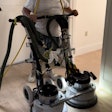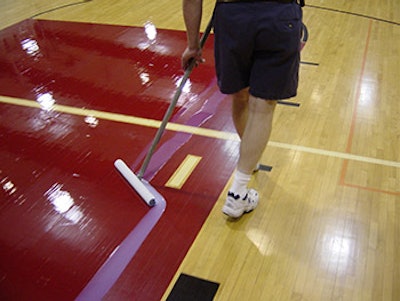
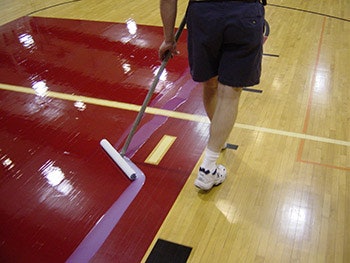
The proper mechanism for finish drying and curing varies by type of finish. It is important to know that each type of finish has its own needs and drying points, but there are several commonly used terms to describe certain points along the dry curve regardless of the type finish. Here are the four most common stages of curing; being familiar with these stages, what they mean and how to describe them will help you do a better job putting down finish on the job site.
Set Point: The first stage a finish arrives at is the point where it will no longer flow and level. This is called the set point. It is not dry, it may be tacky and it may even feel wet when touched, but enough liquid carrier has evaporated so the product will not flow and level any further. In two-part systems this is sometimes referred to as the "gel point."
At set point the finish can no longer be "worked" or feathered to repair any missed spots or applicator marks without causing film imperfections such as lap lines, haze or streaking.
Dry to Touch: This is the second stage of finish drying. It is just what it says: If you lightly touch the surface, liquid will not transfer to your finger. It will be dust-free at this point-no dust sticks to the surface.
This is the point at which air movement can be started across the surface to draw off the liquid carrier. Good air movement will help speed the curing process by increasing the evaporation rate of the liquid carrier as well as help with removing chemical odors. Windows can be opened and the HVAC system can be turned on.
Dry Hard: At the third stage, the finish is hard enough and dry enough to go on to the next steps. The floor can be abraded and another coat added, and it can be walked on lightly. Even though many contractors turn the job over to the owner at this point, normally the finish still cannot be covered and area rugs or throw rugs should not be put back. That is because the finish is dry, but curing is still taking place within the film to reach its ultimate hardness and durability.
The transition to fully cured varies greatly depending on the finish used. During this time, the finish will only have partial durability and chemical resistance. Customers should be aware that light foot traffic is acceptable, but they should avoid harsh cleaning chemicals, which can cause blushing of the finish, until the finish has cured fully.
Fully Cured: When this final drying stage happens will vary from days to months depending on the type of finish and the conditions of the job site. Fully cured is the point when the finish develops 100 percent of all its properties. Rugs and matting can be replaced at this point, and proper hardwood cleaners should be used on a regular basis to maximize the look and life of the floor.
These drying stages are well known by the finish manufacturers, and any contractor can get a good estimate of the time the various stages will take to develop by talking with their finish supplier. When discussing the finish with the supplier, contractors would help themselves by accurately describing the conditions to the best of their knowledge. (Good information in … good information out; junk in … junk out.)














